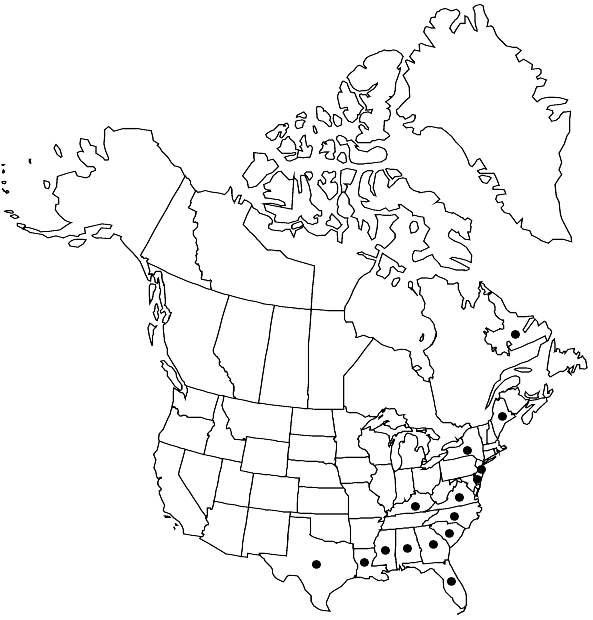Sphagnum molle
Musc. Allegh., 205. 1846,.
Plants moderate-sized, soft and lax when wet, stiff when dry, typically very compact, capitulum flat and usually large; pale whitish, yellowish or purplish, occasionally a deep purple-red; without metallic sheen when dry. Stems pale green to straw-colored; superficial cortical cells aporose. Stem leaves quite variable in shape, elongate-lingulate to ovate, broadest above the middle, 1.9–2.5 mm, slightly concave, straight; apex broad and toothed; hyaline cells narrowly rhomboid, 0–1-septate, distal portion fibrillose, convex surface with membrane pleats, concave surface with 1(2–3) oblong membrane gaps. Branches rarely 5-ranked. Branch fascicles with 2 spreading and 1–2 pendent branches. Branch leaves ovate, 1.6–2.2 mm, concave, straight; apex stiffly involute and broadly truncate with up to 8 teeth, border denticulate due to cell wall resorption and projecting cell walls; hyaline cells strongly bulging on convex surface and nearly plane on the concave surface, convex surface with narrowly elliptic pores along commissures grading from smaller pores near the apex to large rounded pores at base, concave surface with large round pores in proximal regions of leaf. Sexual condition monoicous. Spores 27–33 µm, finely papillose on both surfaces with distinct bifurcated Y-mark sculpture on distal surface; proximal laesura less than 0.5 spore radius.
Phenology: Capsules mature early to mid summer.
Habitat: Weakly minerotrophic and hygrophytic, poor fens and sand dunes, forming tight cushions among grasses and sedges in savannas, pine barrens, swamps, pond margins, and ditches where periodic dessication is common
Elevation: low to high elevations
Distribution

Nfld. and Labr. (Labr.), Ala., Del., Fla., Ga., Ky., La., Maine, Miss., N.J., N.Y., N.C., S.C., Tex., Va., Europe.
Discussion
The sporophytes of Sphagnum molle are common. This species is usually easily distinguished from other red species of sect. Acutifolia by its relatively large, straight, loosely spreading and unranked branch leaves. Sphagnum tenerum, the other red species of sect. Acutifolia to which it is most similar, has branch leaves that are quite imbricate. Microscopically, the denticulate-margined branch leaves are unmistakeable.
Selected References
None.